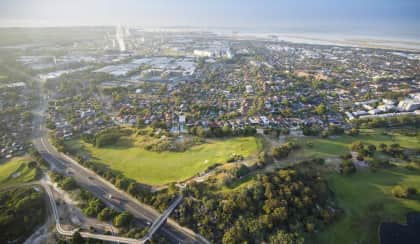Aussie rents soar to record-breaking heights
In some pockets of the country, house rents are up nearly 30 per cent in the past year, the largest increase since the Real Estate Institute of Australia (REIA) began keeping records nearly three decades ago.

Leading the charge for Australian home rent increases is the NSW capital, Sydney, where they’ve skyrocketed 27.5 per cent in the past 12 months to $650 per week, making the harbour city’s market on par with the national capital, Canberra, which has been consistently the most expensive city for renters over recent years.
REIA president Hayden Groves believes this growth highlights rental affordability’s position as a “looming challenge” for the Australian property sector moving forward due to ongoing supply challenges, which are expected to be further exacerbated in the coming years.
While the situation is currently dire, as evidenced by Sydney’s soaring rents, Mr Groves warned that “policies that artificially limit market rents, such as rent freezes, would make this challenge significantly worse as landlords and build-to-rent providers would inevitably quit the market”.
Over the opening three months of the year, the median rent for a three-bedroom home increased across all Australian capitals. This trend extended when examining the 12 months to March, with Brisbane’s 15.6 per cent growth during this window being the largest of any national market.
Mr Groves outlined the weighted average rent for a three-bedroom home across Australia’s eight capitals rose to $536 per week, marking a quarterly increase of 3.9 per cent.
Furthermore, he explained: “Adelaide had the highest quarterly increase of 5.3 per cent, and Canberra had the lowest increase of 0.3 per cent.”
For two-bedroom dwellings, the REIA revealed rents increased in every capital city bar Adelaide and Canberra, where they held firm, over the first three months of the year. Extending the period out to 12 months and the data found rent increases across all capital city markets.
Victorian capital Melbourne reported the largest growth over the March quarter (13 per cent) as the median weighted average rent for the dwelling group jumped to $543 per week.
Despite rents booming, Mr Groves painted a picture of more modest growth for Australia’s national house prices, with the weighted average capital city median price increasing 0.1 per cent for homes but decreasing 0.2 per cent for other dwellings.
For Australia’s capital cities, the median house price rose to $952,648 over the opening quarter of the year, with increases ranging from 0.4 per cent in Adelaide through to Darwin’s 3.7 per cent increase.
“Over the 12 months to the March quarter, the weighted average capital city median house price decreased by 7.8 per cent. For other dwelling sales, the weighted average median price for the eight capital cities decreased to $623,398, a quarterly decrease of 0.2 per cent,” Mr Groves said.
Sydney’s other dwellings are the most expensive in the country, with a median price slightly below $760,000 — 21.7 per cent higher than the national median. Meanwhile, Darwin ($390,000) has the lowest median price for the property group — 37.4 per cent lower than the national median.
“Over the 12 months to the March quarter, the weighted average median price for other dwellings for the eight capital cities decreased by 4.8 per cent,” he concluded.
